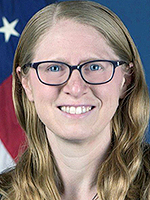Staff Reporter
Shoshana Lew Approved as Colorado DOT Chief

The Colorado Senate on Feb. 4 unanimously approved Shoshana Lew, a public servant with state and federal government experience, to lead the Colorado Department of Transportation.
Lew comes to Colorado after nearly two years as chief operating officer for Rhode Island DOT. She also has served as chief financial officer and assistant secretary for budget and programs at U.S. DOT and has held roles at the U.S. Department of the Interior and the Office of Management and Budget. Lew started her career as an analyst for the Brookings Institution’s Metropolitan Policy Program.

Lew
“The responsibility of serving as the executive director is at once humbling and exciting, and together we have a tremendous opportunity to improve the lives of Coloradans through our transportation system,” Lew said in a statement issued by CDOT. “We all rely on our transportation system for virtually every aspect of daily life and issues like access to good schools, health care options and multimodal transportation options are deeply interconnected. Through all of it, we must work relentlessly to improve the safety of our system for the people of Colorado.”
As CDOT chief, Lew will oversee 3,000 agency employees and manage more than 23,000 lane miles of highway. She also will be in charge of the grant partnerships CDOT sustains with other groups, such as metropolitan planning organizations, local government agencies and airports.
Gov. Jared Polis appointed Lew to serve as executive director of CDOT on Dec. 21.
“CDOT has a big job ahead as we focus on reducing traffic. We must manage the infrastructure that we have, while also tackling congestion both on the ground and in the air as we accommodate population growth with a system that expands multimodal options and integrates new technology in ways that make us more efficient,” Polis in the statement. “We must work to execute on these priorities in real time, while simultaneously working toward a more sustainable source of funding to keep our system sustainable and safe for the people of Colorado.”

